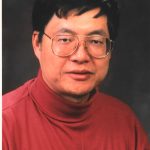
Funded by the Dick Vitale Pediatric Cancer Research Fund
Outcomes for children with brain cancer are poor and current therapies are harmful to normal cells in the body. New therapies that only target cancer cells are greatly needed to improve outcomes for this terrible disease. We tested the ability of a modified cold-sore virus to target and kill brain cancer while not injuring normal cells in children. Results from the clinical trial were very exciting. We found that the virus directly kills cancer cells and also stimulates a child’s own immune system to attack the tumor. From the trial, we learned that in order to achieve even greater responses from the therapy, we need to continue the immune system attack on the tumor. To achieve this goal, we will combine two therapies that work well together: the altered cold-sore virus with a unique cancer vaccine. When the cancer vaccine is given before the virus, it prepares the immune system to fight the cancer and improves the virus’ ability to kill the cancer and stimulate the immune system attack on the cancer. We plan to create the ideal cancer vaccine with the cold-sore virus in the lab and then conduct a clinical trial of the combination therapy to benefit children in great need of more effective and less-toxic treatments. We expect these exciting therapies will result in even better outcomes in children with brain cancer. Importantly, this combination therapy can be used to treat other pediatric cancers, increasing the overall potential to help children with cancer and their families.

The immune system removes transformed cells that give rise to cancer. For many years, the process that tumors use for shielding against the immune system was poorly defined. Now the factors that prevent tumors from being destroyed are being discovered. This is spurring new drugs to be made that kick-start immune cells to reject tumors. These new drugs, named immune ‘checkpoint’ inhibitors, are having a major impact on the treatment of patients with different cancers. These drugs disrupt tumor shielding to revive immune cells for combat and inspire hope that one-day patients may no longer need toxic chemotherapy. Although many patients respond well to immune therapy drugs, with time, the tumor can adapt and develop new tactics to outsmart immune cells. Now that more than 40% of cancer patients are candidates for immune therapy, drug resistance is becoming a key problem.
With colleagues at Vanderbilt University, we recently studied how resistance may develop in patients with melanoma, breast, and lung cancer. We found new factors that could cause tumor resistance, but might also be novel targets for immune therapy. In this proposal, we first plan to study these new targets in tumor samples from patients with resistance. Secondly, we will learn how they bind to tumor shielding factors and screen drugs that could block them. Finally, we will study these new immune therapy drugs in mouse models of cancer. We expect that this proof of concept study will introduce a new target for next stage development in early clinical trials.

Funded by the Dick Vitale Pediatric Cancer Research Fund
Anthracycline chemotherapy is used to treat over 50% of childhood cancer, and has resulted in improving in survival, such that over 85% of children now survive 5 or more years after a cancer diagnosis. Unfortunately, heart failure is an unwanted side-effect of anthracyclines, and is one of the leading causes of death in children cured of their cancer. Childhood cancer survivors are at a 5-15-fold higher risk of serious heart problems compared to the general population. The risk of heart failure increases with anthracycline dose, but the risk differs from child to child. Several studies have looked at the cause of heart failure at the DNA level. However, it is important to take this investigation to the next level, that is, truly understand the basic causes of at heart failure caused by anthracyclines. We propose to do this in a large study across 141 childhood cancer hospitals, where we are collecting blood samples from 300 childhood cancer survivors who have developed heart failure and 300 childhood cancer survivors who did not develop heart failure. We will use this information to get a deeper look at how anthracyclines cause heart failure. We hope that this will help us identify patients at highest risk, providing guidance in developing new ways to prevent and treat this unfortunate complication.

First year of this Vintner Grant funded by the 2018 V Foundation Wine Celebration in honor of Suzanne Pride Bryan
Approximately 20-25% of breast cancers express the human epidermal growth factor receptor 2 (HER2). These tumors are associated with a high risk of recurrence because of possible resistance to HER2-therapies. Therefore, new therapies are needed to treat this fast growing form of breast cancer.
Poly (ADP-Ribose) polymerases (PARP) inhibitors have been used to treat breast and ovarian cancers with DNA mutations. In addition to its roles in DNA damage repair, PARP1 has other roles such as activation of genes, which control tumor cell growth. PARP inhibitors may be used as a treatment to block tumor cell growth. In this study, we will determine the safety and effectiveness of combining the PARP inhibitor niraparib with the HER2-targeted agent trastuzumab to treat HER2+ breast cancer in a clinical trial. We will also examine tumor tissue samples to help us understand how the treatment effects tumor response. Our goal is to develop better therapies to improve the survival of breast cancer patients who are at high risk of relapse.

V Scholar Plus Award – extended funding for exceptional V Scholars
Cervical cancer is responsible for 15% of cancer-related deaths in women worldwide, with highest frequency occurring in resource-limited settings. In addition, incidence and mortality rates are disproportionately higher in African-American and Hispanic populations within the United States, compared with other ethnic/racial groups. Many patients die of cancer either because it spreads to other body organs (metastasis), or because the cancer grows again in the same organ (recurrence). In cervical cancer, 90% of recurrence cases occur within 3 years of diagnosis, and less than 5% of these patients survive beyond 5 years. It is therefore essential to find ways to predict the likelihood of tumor recurrence in order to improve the management and prognosis of cancer patients. We hypothesize that the biological events that lead to tumor recurrence are already at play, even at the time of treatment. In particular, we believe that several biological molecules (human, viral and bacterial) play role in this complex process. We therefore seek to identify and compare these factors in surgically removed cervical tumors and their adjacent normal tissues between 2 groups of women: those with tumor recurrence within 3 years of surgery, and those without recurrence despite longer follow-up. We hope to identify differences in the relative abundance of these biological molecules that will serve as sentinels (we call them biomarkers) to warn us of the likelihood of tumor recurrence. This work has the potential to lead to the development of diagnostic tools for predicting and preventing recurrence in and beyond cervical cancer.

Funded by The Stuart Scott Memorial
Cancer Research Fund
Cervical cancer is responsible for 15% of cancer-related deaths in women worldwide, with highest frequency occurring in resource-limited settings. In addition, incidence and mortality rates are disproportionately higher in African-American and Hispanic populations within the United States, compared with other ethnic/racial groups.
Many patients die of cancer either because it spreads to other body organs (metastasis), or because the cancer grows again in the same organ (recurrence). In cervical cancer, 90% of recurrence cases occur within 3 years of diagnosis, and less than 5% of these patients survive beyond 5 years. It is therefore essential to find ways to predict the likelihood of tumor recurrence in order to improve the management and prognosis of cancer patients.
We hypothesize that the biological events that lead to tumor recurrence are already at play, even at the time of treatment. In particular, we believe that several biological molecules (human, viral and bacterial) play role in this complex process. We therefore seek to identify and compare these factors in surgically removed cervical tumors and their adjacent normal tissues between 2 groups of women: those with tumor recurrence within 3 years of surgery, and those without recurrence despite longer follow-up. We hope to identify differences in the relative abundance of these biological molecules that will serve as sentinels (we call them biomarkers) to warn us of the likelihood of tumor recurrence. This work has the potential to lead to the development of diagnostic tools for predicting and preventing recurrence in and beyond cervical cancer.











